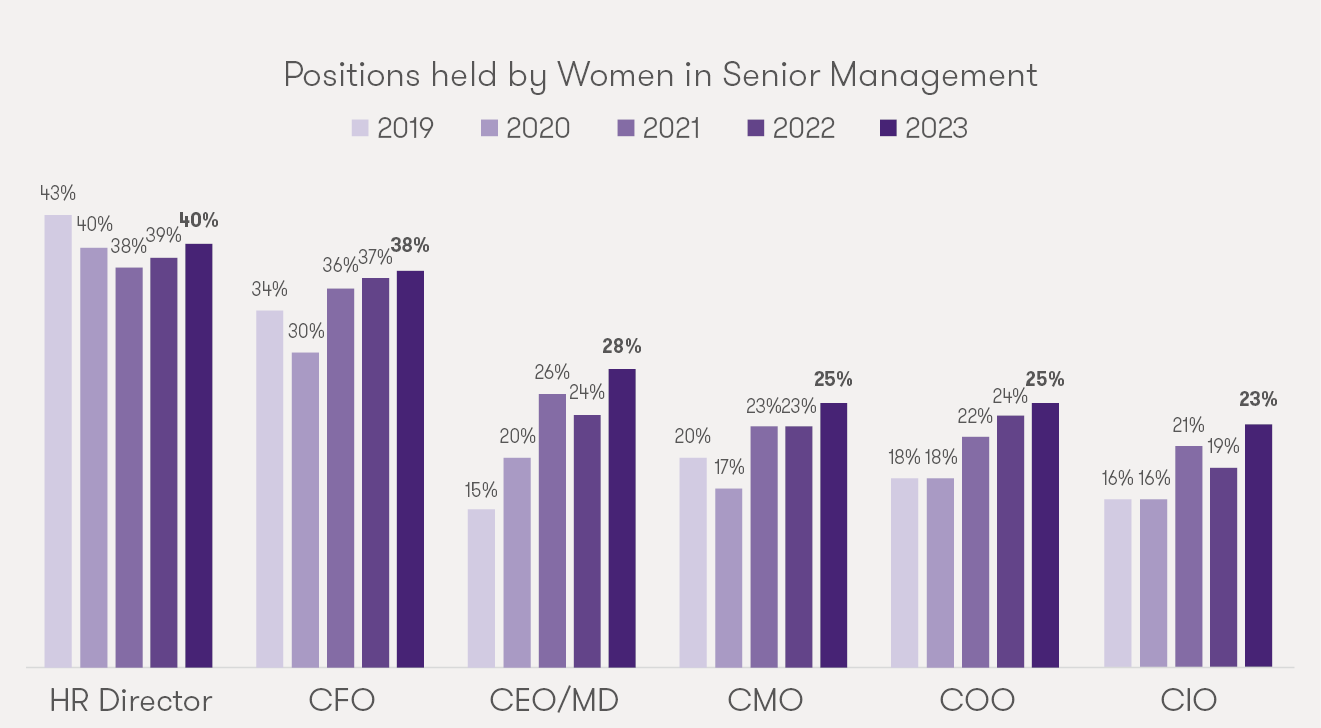
In addition to posting flower sales records, serious topics also get attention on International Women’s Day: for example, how to involve more women in the management of organizations. The reason is simple – both now and in future, the core of sustainable business activity is a diverse staff.
Consequently, key positions should be filled not only by people from different genders but different ages and ethnicities. This will create a favourable environment for innovations, seeing situations from different angles, rapid response time and, in short, making of better decisions. Studies show that increasing diversity of the senior management and at other levels improves business performance.
One-third of top executives are women
International Women’s Day is an appropriate time to take a closer look at participation of women in senior management. Since 2003, the international network of business consultancies Grant Thornton has conducted an annual study [ 3532 kb ] to determine what percentage of seats on senior management is filled by women. It is nice to see that the statistics around the world keep on improving: in 2003, executives were 19% women according to the Grant Thornton study, but it had risen to nearly a third (32%) as of 2022.
Considering how much of a change the coronavirus pandemic meant for work arrangements at organizations, it will presumably promote even greater proportions of women in leading positions. The latest survey conducted by Grant Thornton showed that 34% of the executives at medium-sized companies who have embraced hybrid work are women, while the figure is 36% for companies who are completely flexible and allow employees themselves to choose how to work. At companies with a predominantly office-based work model, 29% of executives are women. The more flexible the work organization is, the more women we see in the management. For example, Grant Thornton forecasts that if companies continue promoting flexible methods of work and support female advancement on the career ladder, the executive management of medium-sized companies will be 34% female by 2025.
Furthermore, flexible work arrangements do not serve only women’s interests; they also allow streamlining planning of professional and private life for students, part-time workers and others for whom working 9-5 in the classical sense is unsuitable or not a good fit for their personality.

Quotas shouldn’t be the solution
The above is also a good example of how a diverse workforce at companies should not be forced, such as through quotas based on gender or other criteria. Promoting diversity always starts from the management and the desire to create the kind of organizational and work culture that does not limit people’s possibilities but broadens them.
So it’s important for employers to offer all growth opportunities: training, mentorship, the chance to put themselves to the test on assignments different than the ones they are used to doing every day. In this manner, people can discover new strengths and develop existing ones. It’s no wonder when people nearing retirement age with an attitude that their best days are behind them turn out to be a company’s best salespersons or a young specialist becomes the head of the whole business area. Grant Thornton Baltic’s more than hundred-strong staff is itself a good example: we have women and men serving as our heads of business areas, who got there by starting out in a specialist position. Half of our partners in fact started out the same way. We also promote horizontal career paths in our organization: for example, an accountant can move to the audit department to become an audit assistant or audit manager, but we also have the example of a sworn auditor who started working in the area in order to reduce their workload and responsibilities in a another position.
I am certain that diversity – people of different ages, genders and ethnicity are the foundation of a successful and sustainable organization. That in turn means that the duty of every organization leader is to forge an organisational culture where everyone has equal opportunity.





